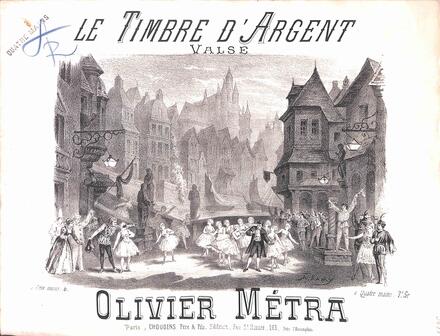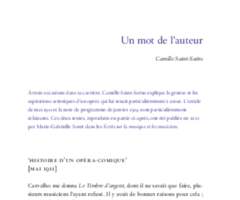Le Timbre d’argent

Drame lyrique in four acts to a libretto by Jules Barbier and Michel Carré, completed in 1865 and premiered on 23 February 1877 at the Théâtre National Lyrique in Paris.
No opera probably ever followed a more complicated path than that of Saint-Saëns’s Le Timbre d’argent. Completed in 1865, right after the composer’s second failure at the Prix de Rome competition, the work was not premiered until 1877 – in its version with spoken text – at the Théâtre National Lyrique, conducted by Jules Danbé. The unexpected closure of the theatre prevented any further performances of the opera, and the composer was then enticed, by promises from various theatre managers, to alter the appearance of a score that he considered to be one of his best. Le Timbre d’argent was later revived, notably in Monte Carlo (1905) and La Monnaie (1914), in an entirely sung version, reintroducing scenes that had been cut in 1877. Small wonder that the author defended with such determination a work whose subject, in his own words, “is nothing but the struggle of an artist’s soul against the vulgarities of life, his inability to live and think like everyone else”. Le Timbre d’argent is of the utmost importance in the history of French opera, since it was composed in the midst of the great Wagnerian debate, with/guided by innovative principles. Anticipating the phantasmagoria of Offenbach’s Les Contes d’Hoffmann, the narrative takes place almost entirely in a nightmare. And the final scene is nothing less than a cinematic flashback ahead of its time. Saint-Saëns wrote, amused: “The opera appeared to be a revolutionary and prodigiously advanced work” (March 1914).
Scientific publications
Publication
Camille Saint-Saëns. Le Timbre d'argent
Articles


